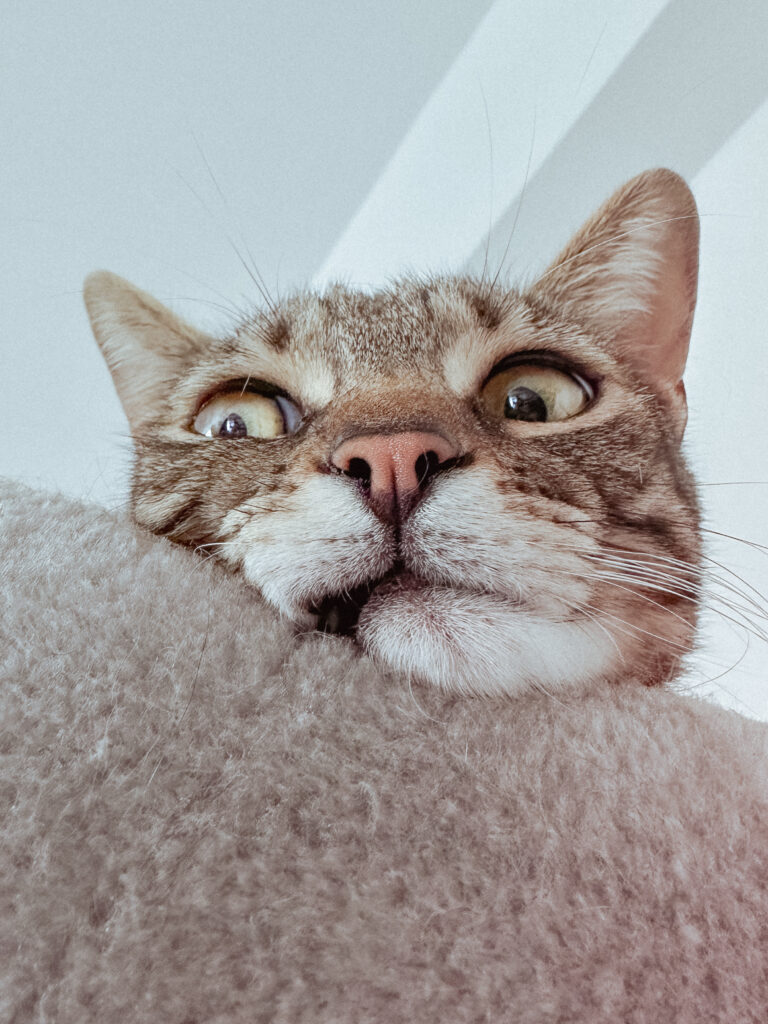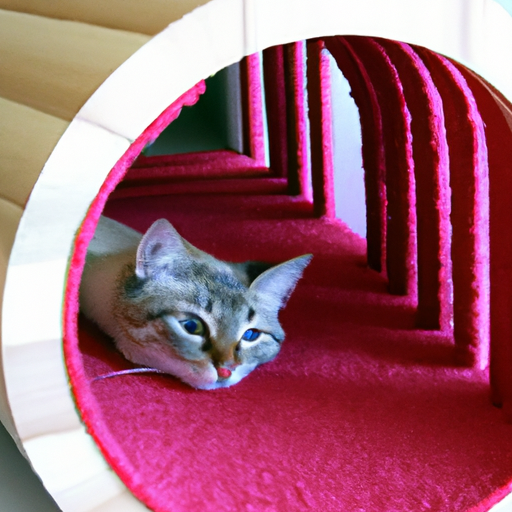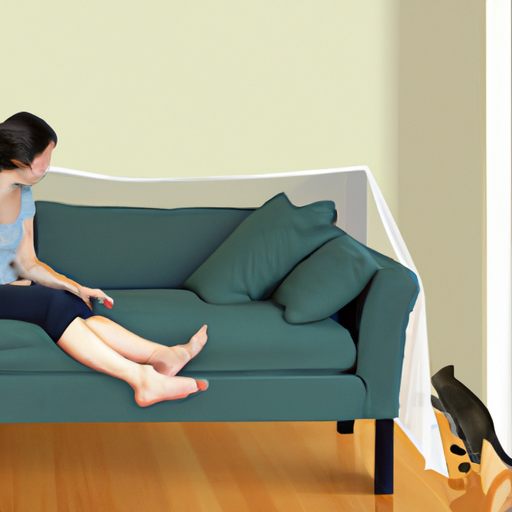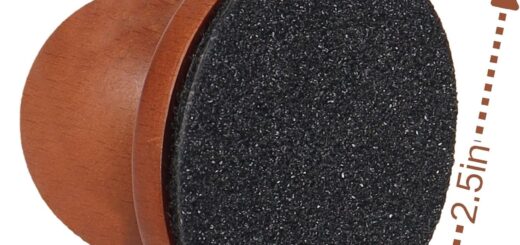Creating A Cat-Friendly Home: Designing Spaces For Feline Comfort
Transforming your home into a cat-friendly haven doesn’t have to be a daunting task. In this article, you will discover a range of innovative ideas and practical tips to design spaces that prioritize the comfort and well-being of your feline companion. From cozy nooks and climbing trees to strategic litter box placements and cat-friendly furniture, you’ll learn how to create an environment that not only satisfies your cat’s natural instincts but also enhances the bond between you and your furry friend. Get ready to unleash your inner interior designer and embark on a journey to make your home the ultimate paradise for your beloved cat.

This image is property of images.pexels.com.
Click here to Understand & Speak With Your Cat!
Furniture and Layout
Choosing cat-friendly furniture
When selecting furniture for a cat-friendly home, it’s important to keep their needs in mind. Opt for pieces that are sturdy and able to withstand the playful nature of our feline friends. Look for materials that are scratch-resistant, such as leather or microfiber, as this will help prevent damage from their claws. Additionally, consider furniture with removable and washable covers to make it easier to clean up any fur or accidents.
Arranging furniture for cat mobility
Cats love to explore and have a natural curiosity, so it’s essential to arrange your furniture in a way that allows them easy access to different areas of your home. Provide them with clear pathways and avoid cluttering spaces with bulky furniture that may impede their movement. Consider leaving some empty spaces and open areas for your cat to roam freely and play without feeling constrained.
Providing vertical spaces for climbing and perching
Cats have a natural instinct to climb and perch in high places, so providing them with vertical spaces can greatly enrich their environment. Invest in cat trees or shelves specifically designed for climbing, which not only offer a great view for your cat but also help save valuable floor space. Placing these vertical spaces near windows or in areas where your cat loves to spend time will provide them with plenty of entertainment and stimulation.
Flooring and Materials
Selecting cat-friendly flooring materials
Cats are notorious for their scratching habits, so it’s essential to choose flooring materials that can withstand their sharp claws. Avoid materials like carpet, as it can easily get damaged and collect fur. Instead, opt for hard surfaces like laminate or hardwood floors, which are more resistant to scratching. If you prefer carpet, consider using carpet tiles that can be easily replaced when scratched or damaged.
Preventing scratching on furniture and walls
To divert your cat’s scratching urge away from furniture and walls, provide them with appropriate scratching posts and boards. Place these cat-friendly alternatives near areas where your cat is most likely to scratch, such as near their favorite resting spots or near entrances and exits. Regularly trim your cat’s nails to prevent unnecessary damage and consider using soft nail caps for an extra layer of protection.
Creating cozy nooks with pet-friendly fabrics
Creating cozy nooks for your cat to relax and sleep in is essential for their comfort. Choose pet-friendly fabrics for their bedding and blankets, such as cotton or microfiber, as these materials are easy to clean and less likely to hold onto cat hair and odors. Consider providing multiple cozy spots throughout your home, including window sills with soft cushions or dedicated cat beds, so your cat can choose the space that suits them best.

This image is property of images.pexels.com.
Click here to Understand & Speak With Your Cat!
Window Treatments
Installing window perches for bird watching
Cats love to spend hours watching birds and other outdoor activities from the safety of their own home. Installing window perches is a great way to provide them with an elevated vantage point to observe the outside world. There are various window perch designs available, from suction cup attachments to more permanent shelves or platforms. Just ensure they are securely installed and can support your cat’s weight.
Using cordless blinds or curtains for safety
The cords from blinds and curtains can be a potential hazard for cats. To ensure their safety, opt for cordless blinds or curtains that eliminate any entanglement risks. This way, your cat can freely explore near windows without the worry of getting caught or injured. If you already have corded blinds, be sure to secure the cords high up and out of your cat’s reach to avoid any accidents.
Creating a comfortable space near windows
In addition to window perches, it’s beneficial to create a comfortable area near windows where your cat can relax and soak up some natural light. Consider placing a soft cushion or a cozy bed by the window, and if possible, position it in a way that allows your cat to enjoy a breeze. Cats love sunbathing, so make sure the spot is warm and inviting, especially during colder months.
Plants and Greenery
Choosing non-toxic plants for indoor spaces
Indoor plants can add a touch of nature to your home, but it’s crucial to select plants that are safe for your feline companions. Some common houseplants can be toxic to cats if ingested, so it’s important to do your research before bringing new plants into your home. Opt for non-toxic varieties such as spider plants, Boston ferns, or cat-friendly grasses like catnip or wheatgrass. These will provide your cat with safe entertainment and help satisfy their natural instincts.
Creating a cat-friendly garden
If you have outdoor space, consider creating a cat-friendly garden where your feline friend can enjoy the outdoors safely. Choose plants that are non-toxic to cats and avoid using any chemical pesticides or fertilizers that may harm them. Provide your cat with designated areas to dig and explore, and consider installing a cat enclosure or a fence to prevent them from wandering off or encountering any potential dangers.
Providing grass or catnip for indoor play
Indoor cats can benefit from having access to grass or catnip for their playtime and sensory enrichment. You can easily grow cat-friendly grasses or catnip indoors in pots or trays. Not only will this provide entertainment for your cat, but it can also help with their digestion by acting as a natural source of fiber. Be sure to monitor your cat’s consumption and replace the grass or catnip as needed to keep it fresh and enticing.

This image is property of images.pexels.com.
Click here to Understand & Speak With Your Cat!
Litter Box Solutions
Choosing the right litter box
Choosing the right litter box is essential for your cat’s comfort and hygiene. Opt for a litter box that is large enough for your cat to move around comfortably and has low sides for easy entry and exit. Hooded litter boxes can provide privacy for your cat but ensure that they are spacious enough and that your cat doesn’t feel trapped inside. Additionally, consider litter boxes with high-quality odor control systems to keep your home smelling fresh.
Finding the optimal location for the litter box
The location of the litter box is crucial for your cat’s convenience and privacy. Place it in a quiet and low-traffic area where your cat can have some privacy while doing their business. Avoid placing the litter box next to food and water bowls, as cats prefer to keep these areas separate. Ensure easy access to the litter box, especially for older cats or those with mobility issues, by avoiding stairs or obstacles.
Keeping the litter box clean and odor-free
Regular cleaning of the litter box is essential to maintain a healthy and odor-free environment for your cat. Scoop the litter box at least once a day to remove waste and clumps and replace the litter completely every two to three weeks. Use a litter that is safe for your cat and has good odor control properties. Keeping the litter box clean and fresh will encourage your cat to use it consistently and avoid any potential litter box aversion.
Cat-Friendly Storage
Creating storage solutions for cat supplies
Having proper storage for your cat’s supplies not only keeps your home organized but also ensures that everything is easily accessible when you need it. Consider using bins or baskets to store toys, grooming tools, and extra litter. Install shelving units or floating shelves to display your cat’s belongings and make them easily visible. This way, you won’t have to rummage through cabinets or closets when your cat needs something, saving you time and frustration.
Designing hidden litter box cabinets
If you prefer to conceal the litter box, consider investing in hidden litter box cabinets. These cleverly designed furniture pieces provide a discrete and stylish solution to hide the litter box while still maintaining accessibility for cleaning and maintenance. Some designs even incorporate ventilation systems and odor control features to ensure a fresh and pleasant environment for both you and your cat.
Incorporating scratching posts into shelving units
Combining functionality with style, you can incorporate scratching posts into shelving units to maximize space and provide your cat with multiple options for scratching. This design not only keeps your cat’s scratching activities contained but also helps protect your furniture and walls from their sharp claws. Choose shelving units with built-in scratching surfaces or attach separate scratching pads or posts to existing shelves.

Click here to Understand & Speak With Your Cat!
Safety Measures
Securing windows and balconies
Cats are curious creatures and may attempt to explore windows or balconies, posing a potential safety risk. To prevent accidents, ensure that windows and balcony doors are securely closed and have tight-fitting screens to prevent your cat from escaping or falling. For added security, consider installing window guards or mesh netting on balconies. Regularly check the condition of screens and make any necessary repairs to maintain a safe indoor environment.
Using non-toxic cleaning products
Cleaning products often contain chemicals that can be harmful to both humans and cats. When selecting cleaning products for your home, opt for non-toxic and pet-friendly options. Look for products with natural ingredients or consider making your own cleaning solutions using household items like vinegar and baking soda. By using non-toxic products, you can ensure a clean and healthy environment for your cat and minimize the risk of accidental ingestion or exposure to harmful substances.
Ensuring toxic plants are out of reach
While it’s important to choose non-toxic plants for your home, it’s equally crucial to keep any toxic plants out of your cat’s reach. Some common household plants, such as lilies, azaleas, and poinsettias, can be toxic to cats if ingested. Place these plants in areas where your cat cannot access them, or consider eliminating them altogether to avoid any potential poisoning incidents. Regularly check for any fallen leaves or plant debris, as cats may be tempted to play with or chew on them.
Creating Enrichment
Providing interactive toys and puzzles
Cats need mental stimulation and entertainment to stay happy and healthy. Invest in interactive toys and puzzles that stimulate their natural hunting instincts and challenge their minds. Puzzle feeders, treat-dispensing toys, and interactive laser toys are great options to keep your cat engaged and entertained. Rotate the toys regularly to keep them feeling fresh and exciting for your feline friend.
Designing play zones with scratching posts and tunnels
Creating dedicated play zones in your home can provide your cat with endless hours of entertainment. Designate an area with scratching posts, tunnels, and interactive toys where your cat can freely play and explore. Incorporate different textures and materials, such as sisal or corrugated cardboard, into the scratching posts and provide various hiding spots and levels for climbing. This play zone will encourage your cat to stay active, curious, and mentally stimulated.
Creating a dedicated space for cat exercise
Cats need regular exercise to maintain a healthy weight and prevent boredom. Dedicate a space in your home for your cat to engage in physical activities. Use interactive toys that encourage jumping, chasing, and pouncing to keep your cat active. Install wall-mounted shelves or create elevated platforms for your cat to climb and explore. By providing a dedicated space for exercise, you’ll help ensure that your cat gets the physical activity they need to thrive.

Click here to Understand & Speak With Your Cat!
Temperature and Climate Control
Providing warm and cozy spots
Cats seek out warm and cozy spots for their relaxation and sleep. Ensure that your home offers various warm areas for your cat to enjoy, especially during colder seasons. Provide soft bedding or blankets near sunny windows, radiators, or heated floors to create inviting spots for your cat to curl up in. Consider using cat beds with built-in heating pads for extra warmth and comfort.
Creating spaces with airflow and ventilation
Proper airflow and ventilation are essential for maintaining a healthy indoor environment for both you and your cat. Avoid confining your cat to rooms without windows or fresh air. Ensure that your home has cross ventilation by opening windows or using fans to circulate air. If specific areas tend to get stuffy, consider using an air purifier to improve air quality. Providing fresh air and good circulation will contribute to your cat’s overall well-being.
Regulating temperature for cat comfort
Cats are sensitive to temperature changes just like humans, so it’s important to regulate the temperature in your home to ensure their comfort. During hot summer months, provide shaded areas or air-conditioned spaces for your cat to seek relief from the heat. In colder weather, keep your home comfortably warm to prevent your cat from getting too cold. Monitoring and adjusting the temperature accordingly will help keep your cat content and comfortable throughout the year.
Introducing Multiple Cats
Designing separate spaces for each cat
If you have multiple cats, it’s essential to provide each cat with their own separate space. Cats are territorial animals and need their own designated areas to retreat to when they want some alone time. This can be as simple as separate beds or blankets in different areas of your home. Additionally, ensure that each cat has enough resources, such as food bowls, water sources, and litter boxes, to prevent any potential conflicts or competition.
Creating hiding spots and vertical territories
To promote harmony among multiple cats, create hiding spots and vertical territories in your home. Cats feel more secure when they have places to hide or perch high above the ground. Provide comfortable hiding spots like covered beds, cat tunnels, or even cardboard boxes placed strategically around your home. Make use of vertical spaces by installing cat trees, shelves, or wall-mounted perches to allow each cat to have their own elevated territory.
Providing multiple resources for food, water, and litter
Ensure that each cat has access to their own set of resources to avoid any potential resource guarding or aggression. Provide multiple food and water bowls in different areas of your home, ideally spaced far enough apart to prevent competition. Place litter boxes in separate locations, keeping in mind that the general rule is to have one litter box per cat plus an extra one. This way, each cat can comfortably eat, drink, and relieve themselves without feeling threatened or territorial.
Creating a cat-friendly home is about understanding and meeting the needs of your feline companions. By incorporating these design tips and considerations, you can create a space that is not only aesthetically pleasing to you but also tailored to your cat’s comfort and well-being. A cat-friendly home will not only enrich your cat’s life but also strengthen the bond between you and your furry friend.









